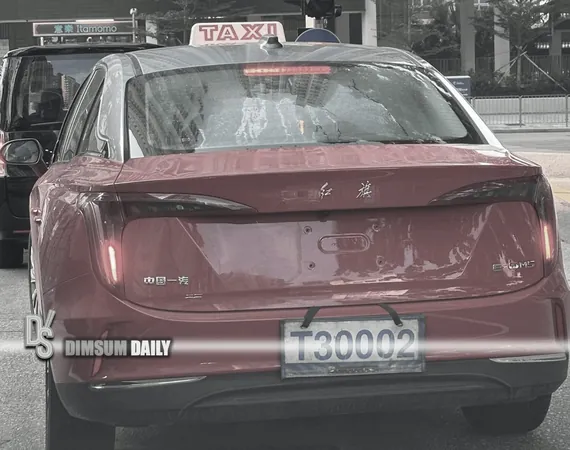
Teen Astronomer Discovers 1.5 Million Hidden Space Objects with AI Breakthrough!
2025-04-16
Author: Ming
A Stellar Breakthrough by a California Teen
In an incredible twist for astronomy, a high school student from California has revolutionized our understanding of the cosmos. Thanks to his innovative artificial intelligence project, Matteo Paz has uncovered a staggering 1.5 million previously unnoticed space objects, showcasing the fusion of youthful ambition and advanced technology.
From Summer Project to Published Paper
During his summer at Caltech, Paz made headlines not just by utilizing a retired NASA mission, but also by publishing a peer-reviewed paper in The Astronomical Journal based entirely on his groundbreaking findings. This is no small feat for a high school student!
The Power of AI Meets Cosmic Mystery
Paz's journey began in the summer of 2022 when he participated in Caltech's Planet Finder Academy under the guidance of Professor Andrew Howard. Mentored by Davy Kirkpatrick, a senior scientist at IPAC (Caltech’s Infrared Processing and Analysis Center), he embarked on a thrilling mission: to decode a colossal dataset from NASA’s NEOWISE telescope.
Originally intended to track near-Earth asteroids, NEOWISE gathered thermal emissions from across the entire sky for over a decade, inadvertently collecting data on far-off cosmic wonders. Paz saw potential where others only saw data.
Revolutionizing Data Analysis with Machine Learning
Faced with about 200 billion rows of data, the Caltech team initially planned to conduct their analysis manually. But not for Paz! With his impressive knowledge in computer science, theoretical math, and programming, he created a machine learning model that could sift through the data efficiently.
In just six weeks, he built a Fourier and wavelet-based model that began to reveal profound insights. Almost immediately, his tool showed promise, identifying subtle shifts in infrared light that hinted at new cosmic phenomena.
Collaboration Fuels Discovery
Paz wasn't alone on this mission; he had a support team at Caltech, including experts in machine learning techniques. Together, they tackled the complex issue of identifying cosmic variables that often went unnoticed due to their erratic behavior.
Paz’s AI overcame these hurdles, flagging stars and celestial objects with measurable brightness variations. His findings will soon culminate in a comprehensive catalog, set to release in 2025, opening new avenues for astronomers eager to study the evolution of distant galaxies.
Beyond Astronomy: A World of Possibilities
While his achievements are rooted in astronomy, Paz envisions a much larger horizon. "The model I implemented can be applied to other fields requiring time-domain analysis, like stock markets or environmental monitoring," he shared, showcasing the versatility of his innovative approach.
Now a paid employee at Caltech, Paz juggles his job while completing high school. He's paying it forward by mentoring students in the Planet Finder Academy, nurturing the next generation of stars in the scientific community.
A Mentor’s Vision for the Future
Kirkpatrick, who discovered a love for science in a small farming community in Tennessee, sees immense potential in Paz. "If I see their potential, I want to make sure that they are reaching it. I'll do whatever I can to help them out,” he said, celebrating the promise of future innovators.


 Brasil (PT)
Brasil (PT)
 Canada (EN)
Canada (EN)
 Chile (ES)
Chile (ES)
 Česko (CS)
Česko (CS)
 대한민국 (KO)
대한민국 (KO)
 España (ES)
España (ES)
 France (FR)
France (FR)
 Hong Kong (EN)
Hong Kong (EN)
 Italia (IT)
Italia (IT)
 日本 (JA)
日本 (JA)
 Magyarország (HU)
Magyarország (HU)
 Norge (NO)
Norge (NO)
 Polska (PL)
Polska (PL)
 Schweiz (DE)
Schweiz (DE)
 Singapore (EN)
Singapore (EN)
 Sverige (SV)
Sverige (SV)
 Suomi (FI)
Suomi (FI)
 Türkiye (TR)
Türkiye (TR)
 الإمارات العربية المتحدة (AR)
الإمارات العربية المتحدة (AR)